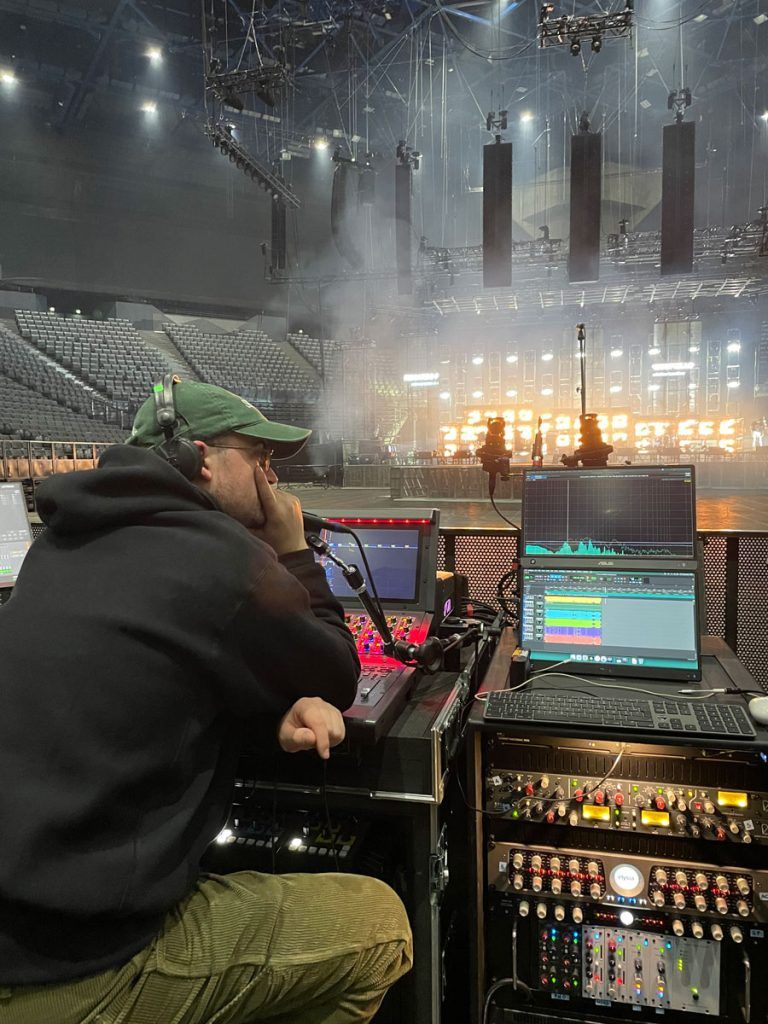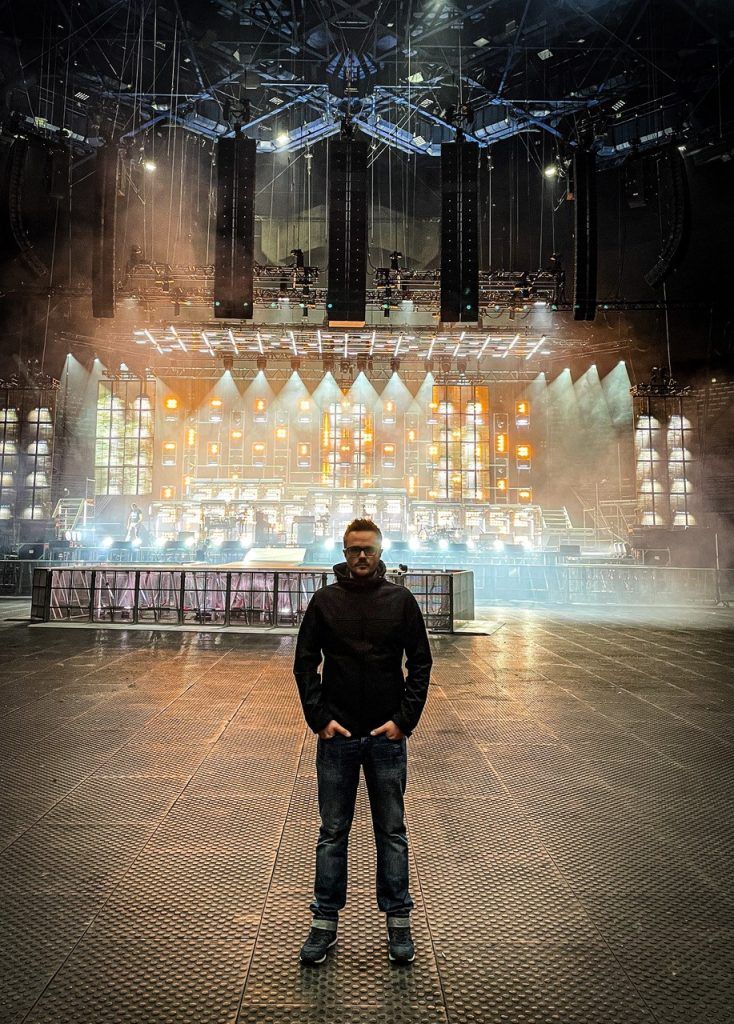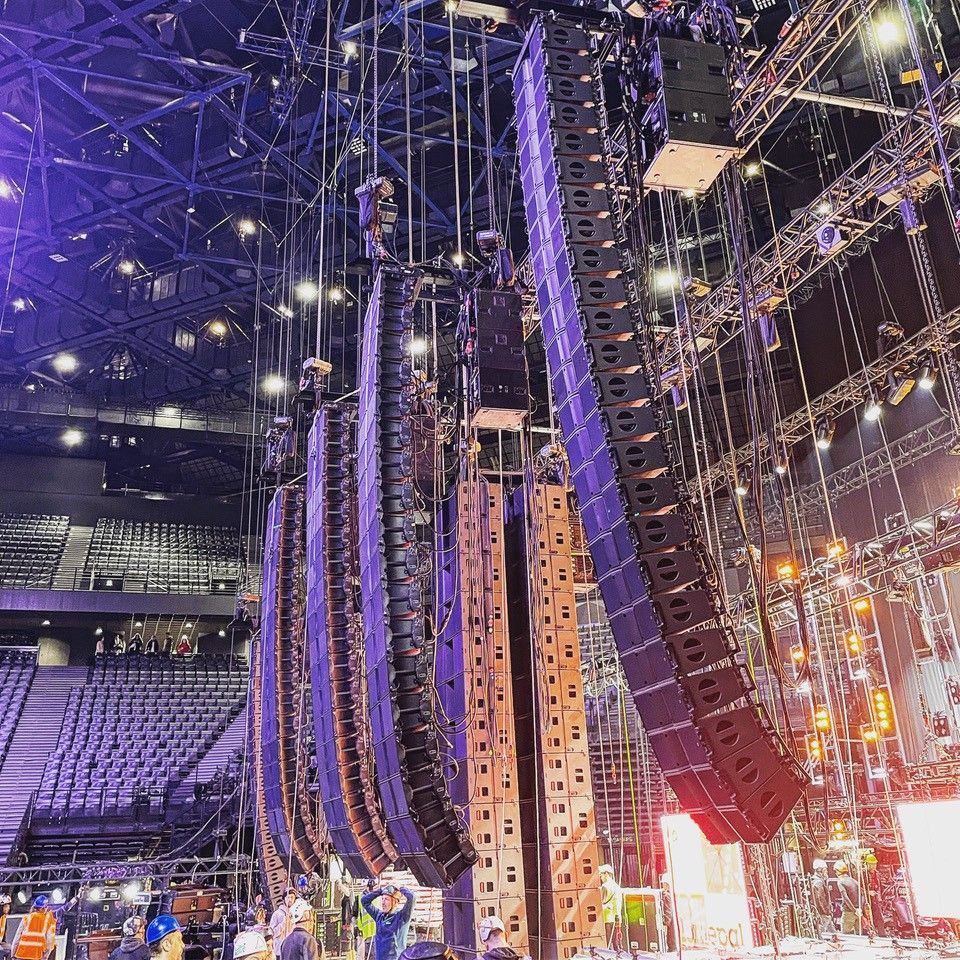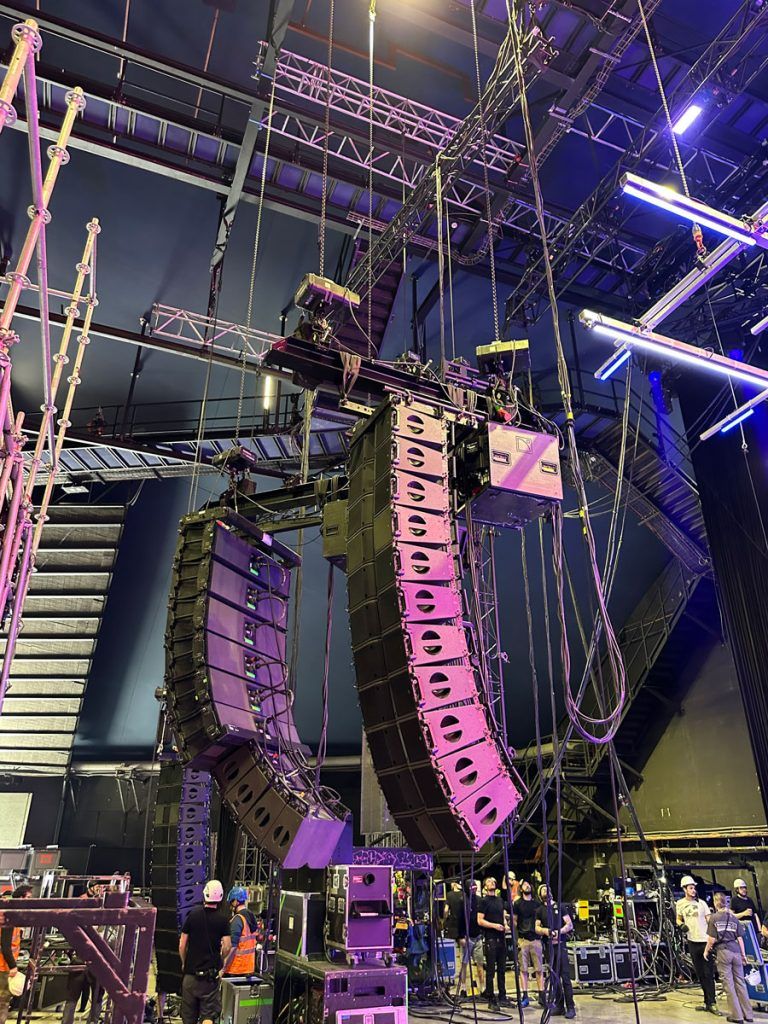FOH Engineer Spotlight: L-ISA Spatial Audio Brings Depth to French Rapper Lomepal’s Tour FOH Engineer Spotlight: L-ISA Spatial Audio Brings Depth to French Rapper Lomepa...
L-ISA technology’s spatial audio was the perfect tool for Lomepal’s tour, according to Lomepal’s FOH engineer and system engineer.
L-Acoustics got the chance to interview the talented sound engineers working with an L-Acoustics concert sound system on French rapper Lomepal’s Mauvais Ordre Tour. The tour was supported by L-ISA spatial audio technology, provided by B Live and French sound design and technical production company Don’t Give Up, which helped FOH engineer Sylvain de Barbeyrac and system engineer Etienne Tisserand provide more definition to Lomepal’s set.
Sylvain, originally from Bayonne in southwest France, has been mixing pro live sound for the past 14 years. “I also work as a recording engineer and studio mixer. I’ve always loved the idea of recording an album, helping to create the live set, and touring – that’s my ideal scenario,” he says. “My formula of mixing in the studio and live has worked for me. I began working with artists like Superpoze, Jacques, Victor Solf, and now Lomepal. I guess things just took off from there.”
Etienne started mixing live sound when he was just 16. “I joined clubs and associations that put on shows to start learning. The next step would have been to study sound engineering, but I became passionate about PAs and sound reinforcement. I spent my first years working in an L-Acoustics rental house where I learned how to deploy my first systems.” Etienne continues, “Afterward, I started working as an assistant system engineer on arena tours about six years ago. Three years ago, I became a system engineer on major tours like Ninho, Orelsan, and Lomepal.”


How L-ISA Was Chosen
Before Lomepal’s tour, Sylvain had never heard of L-ISA. “Together with the show’s producer, tech director, and the artist, we all went to L-Acoustics HQ to learn more. Since we were on tour, I brought a multi-track recording of the previous night’s show. Vlad Coulibre at L-Acoustics prepared a L/R vs L-ISA playback session. Once the artist heard the difference, the decision to go with L-ISA was made.” He continues, “I chose L-ISA, not for the ‘sensational’ aspect. I chose it to make the mix more realistic, consistent, and pleasant for the audience. For me, it’s all about ensuring each musician has their presence felt in the mix relative to their stage position. There are times in the set when we actually follow their movements to keep everything sonically and visually consistent.”
Etienne notes that the choice to go with L-ISA was easy. “Lomepal is hugely invested in his sound and his mix. From the studio to live performances and on tour. I first discovered L-ISA at the L-Acoustics HQ, but this is the first time we brought it on tour at an arena scale.” He continues, “It’s a unique project because a full band is onstage. There are even rock accents in certain parts of the set. Sylvain noticed this and knew that L-ISA would perfectly match his vision.”
Why Spatial Audio is so Critical
“After we recorded the album,” Sylvain says, “It was clear that real instruments and musicians would have a significant role. The album even has live tracks, which isn’t extremely common in the French rap scene. We aimed to remove the laptops, make the sources ‘real’ instruments, and localize the band onstage.”
Etienne adds, “It’s good to remember that each source’s position is pretty straightforward. We have one snapshot per track. There are no ‘gimmicky’ benefits to the setup. The most noticeable difference is hearing the vocals and drums together in the middle. Most people are used to hearing them come from left/right. After a big run of shows, I am comfortable saying it’s completely different from a L/R system. The spatial elements and localization really elevate the experience for the audience.”
Utilizing L-ISA
As an object-based concert sound system, L-ISA can replicate a more realistic sound experience, putting audiences right in the music. Sylvain comments on the ease of its use: “The L-ISA Controller is intuitive and easy to handle. Vlad and Etienne installed a mini L-ISA system in one of our tour rehearsal studios. I had eight days to get familiar with this new way of mixing, but I was ready for the challenge. After 27 concerts in L-ISA, I can’t wait to go even further with the technology.”
Etienne also comments on its straightforward use, “L-ISA is a bigger system than a L/R. But if you are prepared and have the proper rigging solutions, it’s pretty simple to tour with it. By examining our rigging needs ahead of time, we devised a way to get the system up and running quickly every night.”
“Etienne’s expertise really shined here. The team was getting the system up and down in every city just as quickly as a conventional L/R system!” Sylvain exclaims. “One of the biggest advantages of L-ISA is how consistent it sounds everywhere in the room, even across different cities. I’d say it’s one of the top reasons to bring it on tour.”

